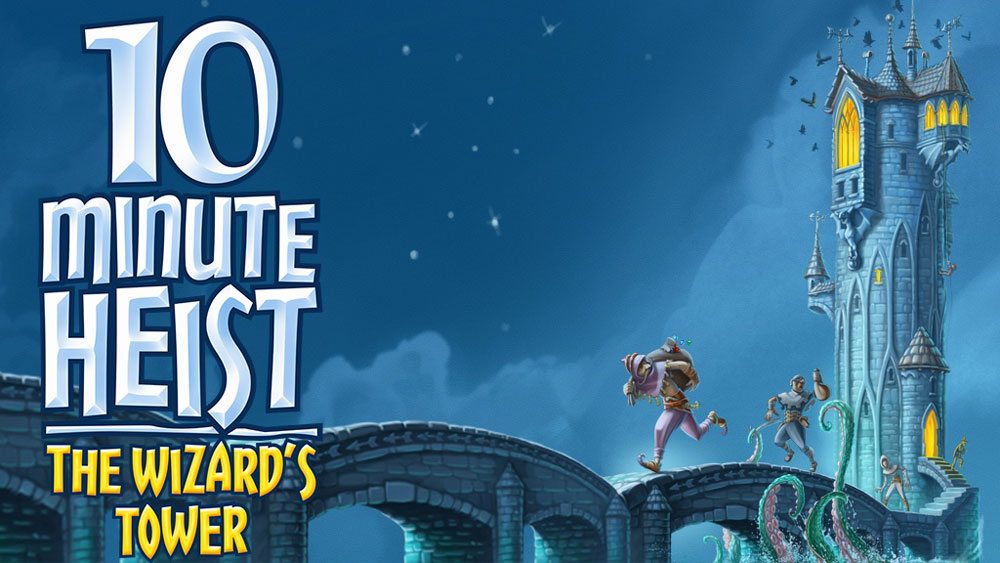The wizard’s tower is full of treasures and artifacts, but you don’t have long before he wakes up and comes looking for you. Make your way through the tower, grabbing what you can, and see who gets out with the best collection of loot. But watch out for those cursed items!
At a glance: 10 Minute Heist: The Wizard’s Tower is a game by Nick Sibicky for 2 to 5 players, ages 14 and up, and takes about 10 minutes to play. It just launched on Kickstarter, with a pledge level of $16 (plus shipping) for a copy of the game. The game is a quick set-collection game where you’ll take turns stealing cards from the tower—but you can only move down, never up. There’s a little bit of “take that” in it but not too much; I think you could play with as young as 8, and there’s nothing particularly inappropriate for pre-teens. (Except, of course, your children should be told that stealing magical items from a wizard’s tower is generally not a great idea.)
New to Kickstarter? Check out our crowdfunding primer, and visit our curated page for more projects we love.
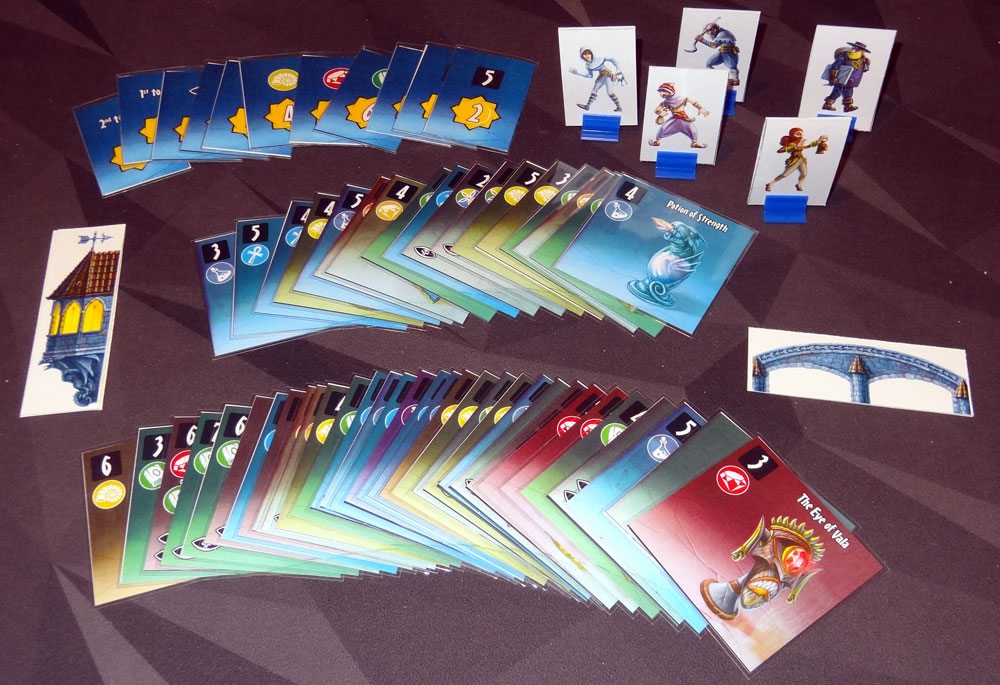
Components
- 17 Light cards
- 32 Dark cards
- 11 Scoring tiles
- 5 Thief standees
- Balcony tile
- Bridge tile
(Note: My review is based on a prototype so images shown don’t reflect final quality. The artwork was complete but this was an inkjet version so colors were a bit off on some cards, and the standees were not die-cut.)
The square cards have different backs, showing either a lit window or a dark window, though for the most part you’ll only look at the backs during setup, because then almost everything is face-up.

The art on the cards, done by Denis Martynets, is nice: there are a lot of different artifacts and they look appropriately valuable and magical, in five different types. The thief standees, likewise, are nice-looking, and will be cardboard cut-outs. The scoring tiles are pretty simple: just an icon of some sort and the number of points it’s worth. The balcony and bridge tile are kind of funny to me: you put one at the top of the tower and one at the bottom, just to make the whole thing look ever-so-slightly more like a tower, but they’re not entirely necessary to the game, either.

How to Play
You can download Print and Play files here (including the rules).
The goal of the game is to score the most points by gathering treasures, avoiding curses, and getting out early.
The tower is made up of two “floors” of light cards at the top, and then 6 more floors of dark cards. To set it up, first you’ll shuffle the two sets of cards, light and dark, and remove a set number of cards (based on the player count) and return them to the box. Then, you lay out the tower, with 5 cards in each row, all face-up except for the very last dark card on the bottom row. The balcony tile goes at the top left of the tower, and the bridge goes at the bottom right, with the “1st to Exit” and “2nd to Exit” score tiles placed below the bridge. All other scoring tiles are placed to the side where everyone can see them. Everyone will then secretly get to choose one of the leftover light cards (in reverse turn order), setting it in front of them face-down. All players start at the balcony, on the top floor.
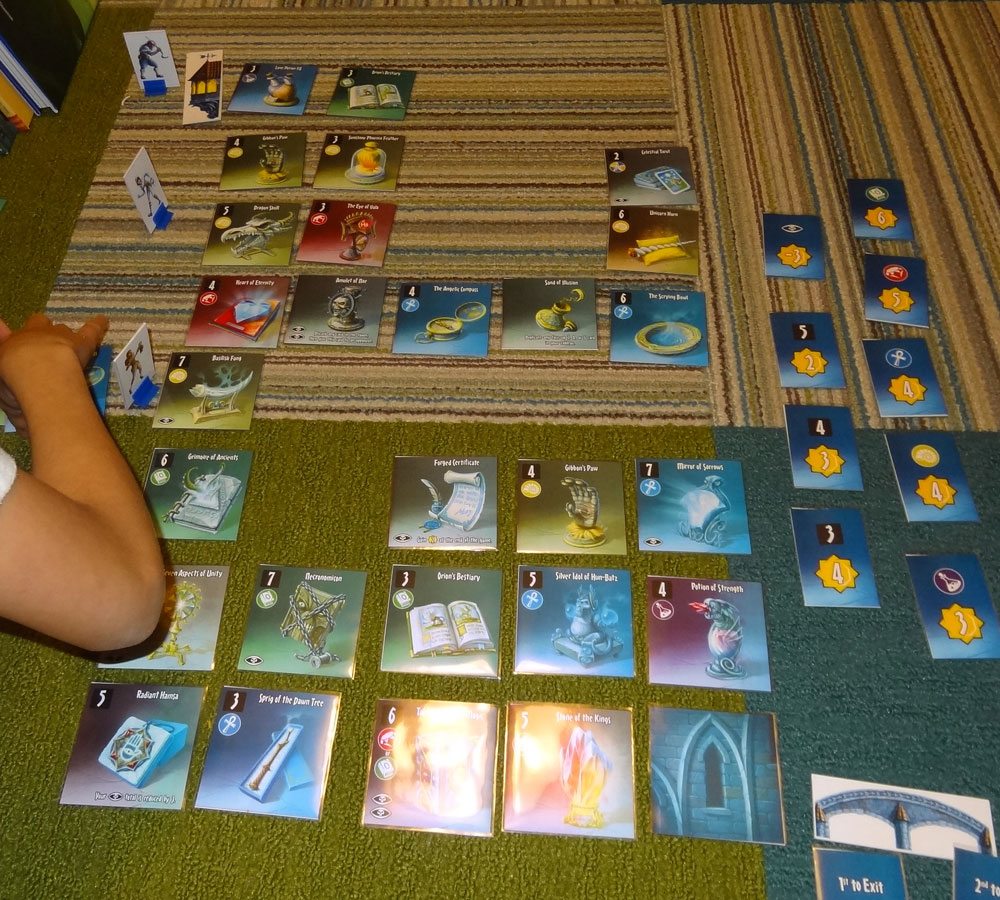
The standees just mark which floor you’re on—you don’t have to stand them on a particular card or anything. On your turn, you may move down as many floors as you wish (or not at all), and then take any card from the floor you’re on and place it face-up in front of you. You may not move up. Some cards have abilities on them—if you take one of those, you activate its ability.
If you’re the first or second one to leave the tower, you take the appropriate scoring tile from the bridge and then wait for everyone else to finish. Once everyone has left the tower, reveal your secret light card and proceed to scoring.
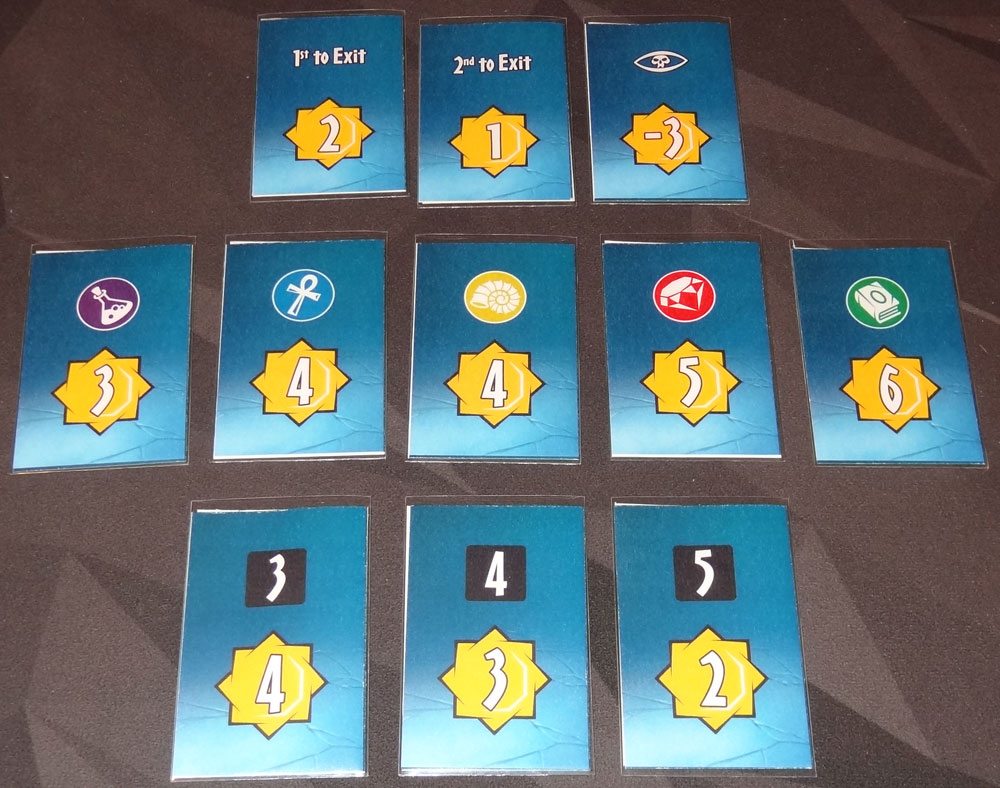
Each scoring tile is evaluated and awarded to the player with the most of that type of card. In case of a tie, nobody gets the scoring tile. For the treasure type scoring tiles, add up the value of your cards of that type: whoever has the highest total wins. For the numbered scoring tiles (3, 4, and 5), whoever has the most cards of that value wins. Finally, whoever has the most curses on their cards gets the -2 scoring tile. Add in points for the 1st and 2nd players to leave the tower, and the highest score wins. Ties go to the player with the fewest curses, then the player with the most scoring tiles.
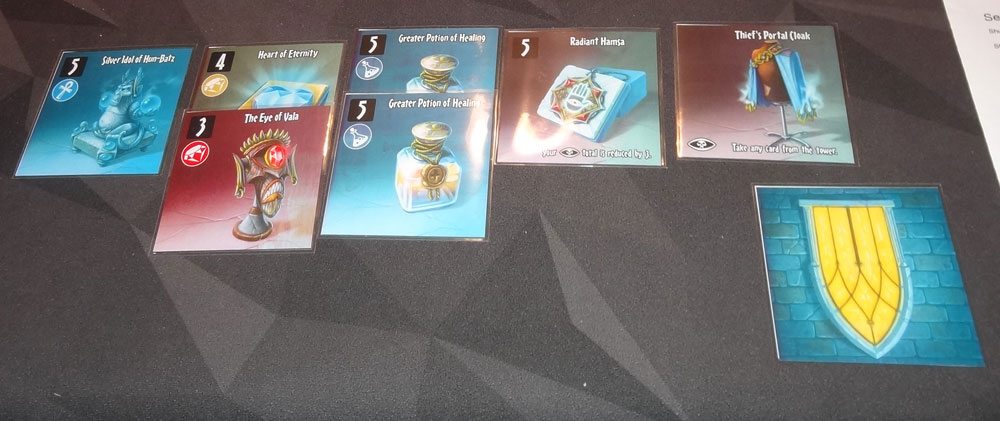
The Verdict
If you feel like Daily Magic Games has been running a lot of Kickstarter campaigns this year, you’re not mistaken: they have an ambitious release schedule and so they’ve run several campaigns in order to have their games ready for next summer. Villages of Valeria, which was on Kickstarter in February, is about to be shipped out from China, with Quests of Valeria and Merchants of Araby at the printer now. Go Nuts for Donuts, which just wrapped up its funding last week, is almost ready for the printer, and there are several more titles waiting in the wings in various stages of testing, art direction, and so forth. That said, I have confidence in Daily Magic’s ability to get the games produced and delivered.
These last two Kickstarters are smaller games: 10 Minute Heist is a quick-playing game that will make for a nice game night opener or filler between heavier games. My daughter likes it as a “one last game before bed” option, too. The idea feels really simple: just go down the tower, grabbing whatever you want. However, once there are other players involved, you realize that it isn’t quite that simple after all. Should you jump down an extra floor to grab that really valuable gem before your opponent? Or stay here to collect some more 3-value cards? What cards are your opponents hiding—do you have enough books already, or are they hiding a book under there? And, of course: is the power on this card worth getting a curse for?
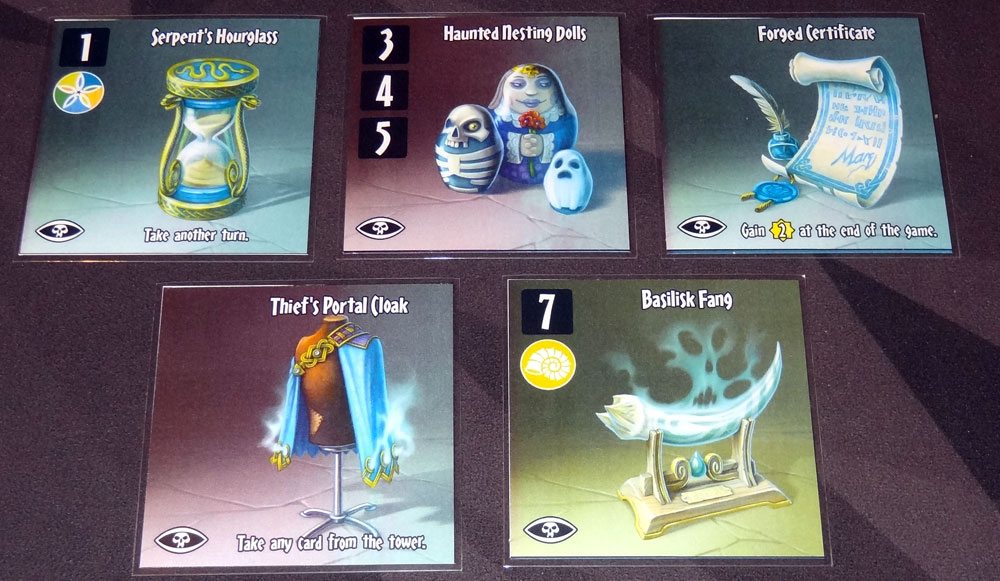
The cursed treasures have a nice mix of powers, making them tempting enough that you’ll consider taking them. Some are just more valuable, so if you want to make sure you have enough books to score, you may want to grab the cursed 7-value book. There are a few that are wild colors, so they count toward every type of treasure. And then there are some that just give you some sort of special ability—the Thief’s Portal Cloak lets you take a card from anywhere in the tower: grab something you left behind earlier, or something from a lower floor that you don’t want somebody to get to first. The trick with cursed cards is that you don’t want to be stuck holding the most curses at the end of the game, but it’s okay to get curses otherwise.
The single face-down treasure card is sort of odd, but it works. The first time I was setting up the game, I thought it was really weird to have a single card face-down and the rest face-up, but I was told it’s so that the tower can’t be totally “solved” by the players. Sure, each player already has a face-down card and those are unknown to the other players, but you also never know whether it’s worth it to grab that face-down card. Maybe it’s a really valuable treasure and will put you over the top for scoring, or maybe it’s a cursed card you didn’t need that gives you the most curses. I’ve seen some games where nobody wants to take it, and some where people have gambled on it.
Getting out of the tower quickly can give you an edge, but it’s not enough to win you the game by itself, because it’s only 1 or 2 points. Really, it’s about the pacing: you want to move quickly enough to get to the good stuff before your opponents, but not so quickly that what you left behind is more valuable than what you’re picking up. Most of the more valuable cards are in the “dark” cards, so the top two rows tend to have less valuable items available–but if you clean out those floors, you may have a good head-start on a particular type of treasure.
Overall, I’ve enjoyed 10 Minute Heist as a quick filler game. It has enough depth to get you thinking about what your opponents are doing, but really does play in about 10 minutes. There are some interesting choices to be made, and since each player has a hidden card, nothing is certain until everything is revealed at the end. As a small game, it generally won’t be the focus of one of my game nights, but it makes for a nice intermission.
For more information or to pledge for a copy, visit the 10 Minute Heist Kickstarter page.
